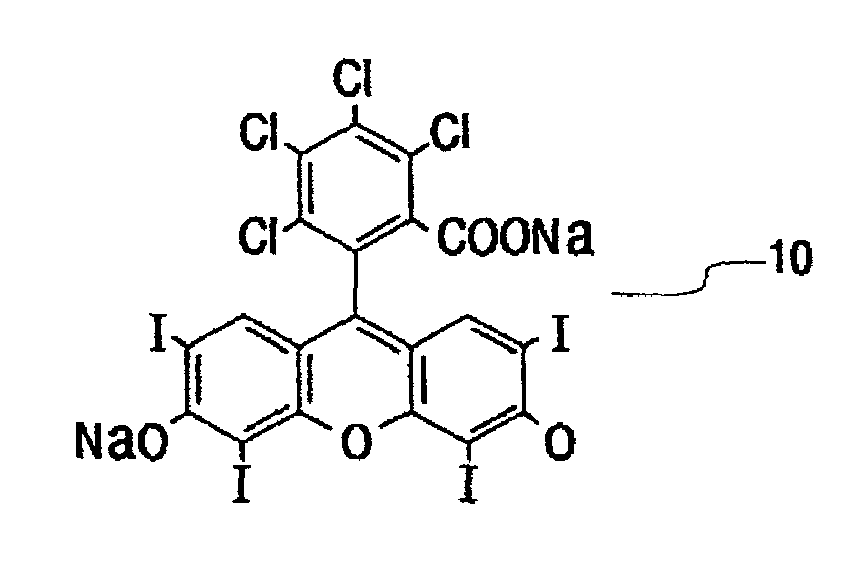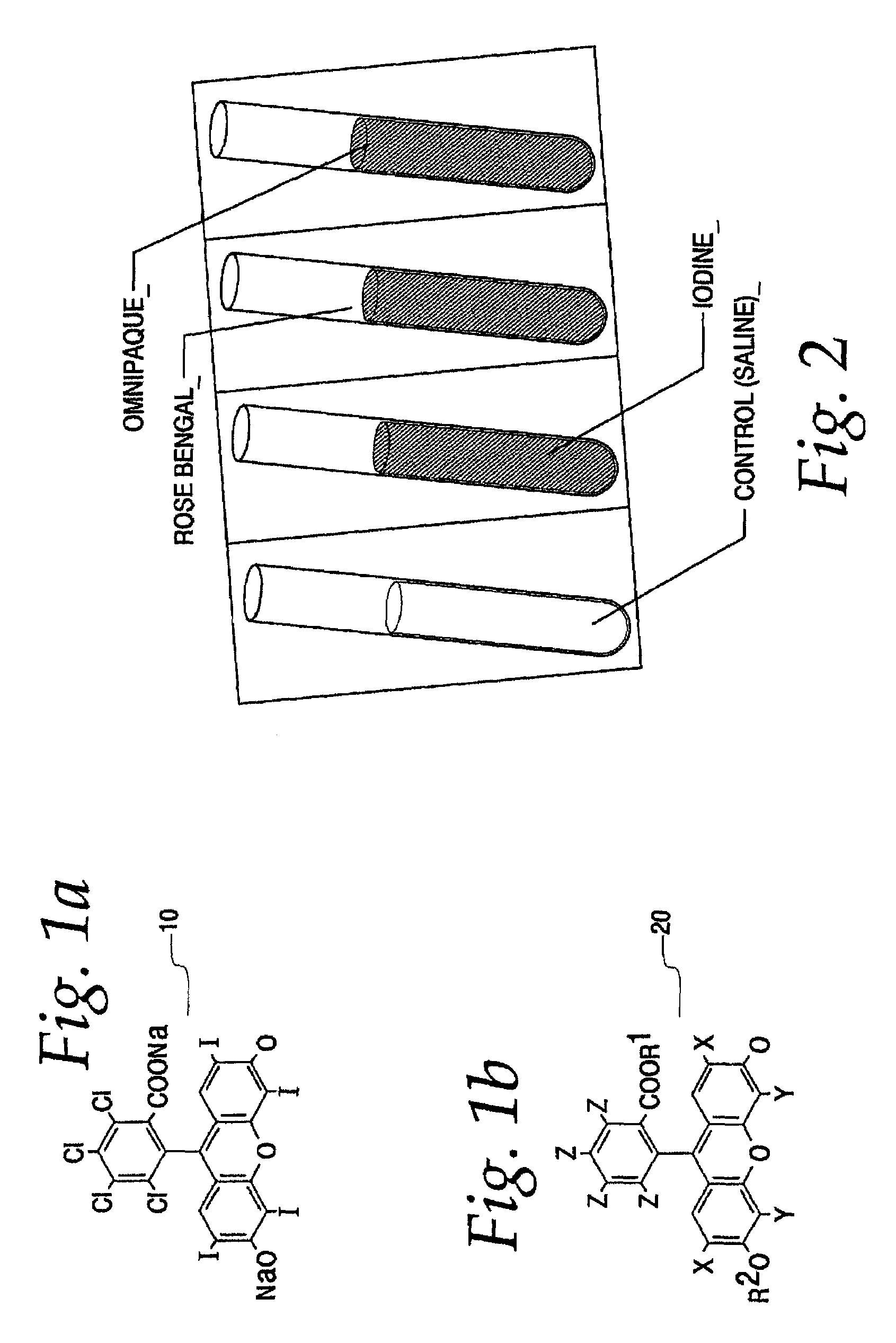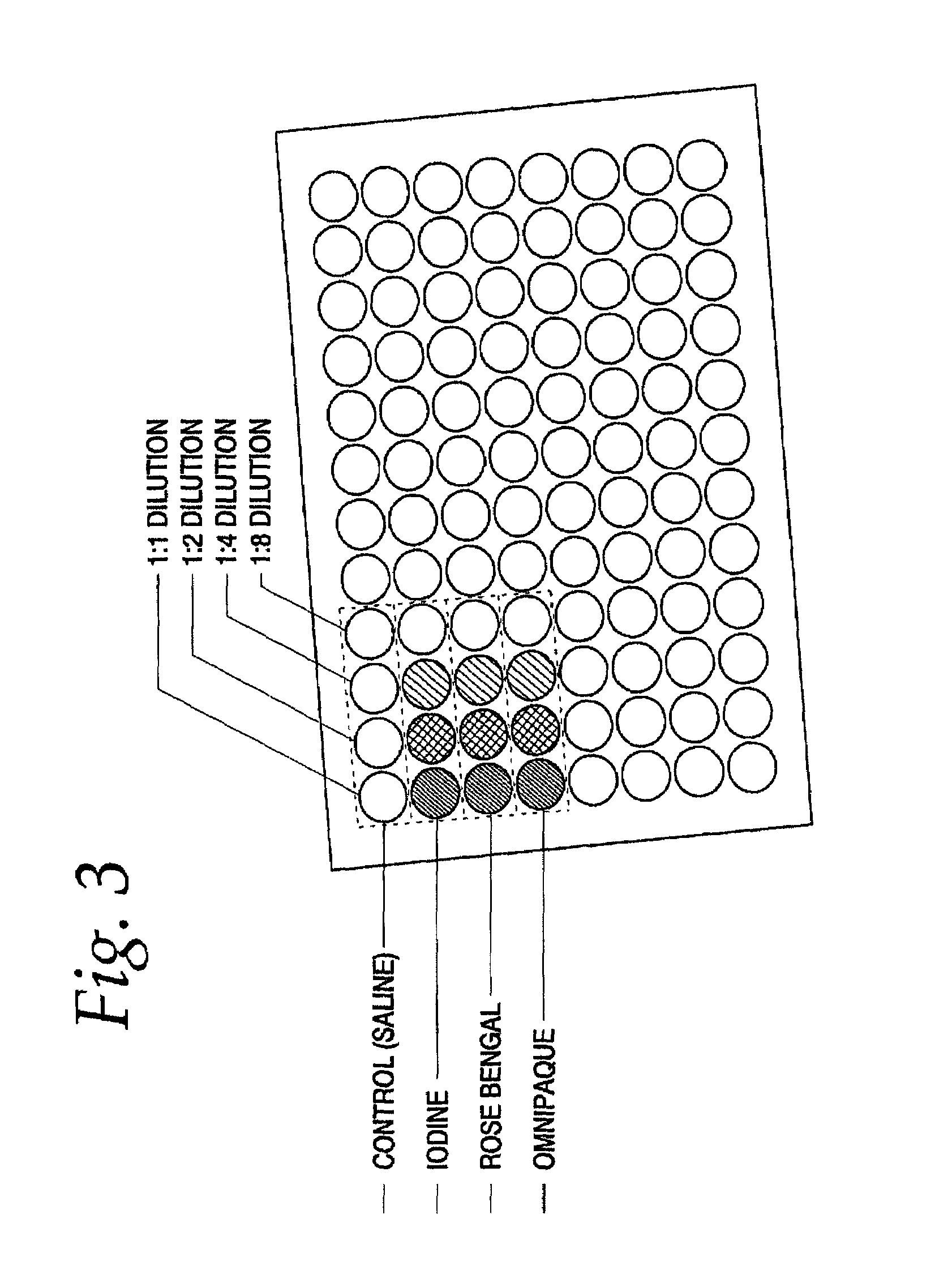High energy phototherapeutic agents
a phototherapy agent and high-energy technology, applied in the field of high-energy phototherapy agents, can solve the problems of troublesome patients, minimal spatial control of the treatment site by physicians, and inability to penetrate deeply into tissu
- Summary
- Abstract
- Description
- Claims
- Application Information
AI Technical Summary
Problems solved by technology
Method used
Image
Examples
Embodiment Construction
[0025]The present invention is directed to agents that can efficiently interact with x-rays or other types of ionizing radiation to produce a beneficial biological response and to methods of treatment and imaging using such agents.
[0026]The inventors of the present invention have discovered that radio dense agents, such as the halogenated xanthenes discussed infra, which exhibit a preference for concentration in cellular membranes and other key components and structures of diseased tissue, will exhibit additional therapeutic dose enhancement over that possible with previously known agents or enhancement mechanisms. This additional dose enhancement is a consequence of increased radiosensitization yield of such agents owing to improved proximity of such agents, upon interaction with diseased tissue, to sensitive structures during irradiation and subsequent radiosensitization. Specifically, most radiosensitizers function by absorbing highly-penetrating energy (which in itself has littl...
PUM
| Property | Measurement | Unit |
|---|---|---|
| energy | aaaaa | aaaaa |
| energy | aaaaa | aaaaa |
| energy | aaaaa | aaaaa |
Abstract
Description
Claims
Application Information
 Login to View More
Login to View More - R&D
- Intellectual Property
- Life Sciences
- Materials
- Tech Scout
- Unparalleled Data Quality
- Higher Quality Content
- 60% Fewer Hallucinations
Browse by: Latest US Patents, China's latest patents, Technical Efficacy Thesaurus, Application Domain, Technology Topic, Popular Technical Reports.
© 2025 PatSnap. All rights reserved.Legal|Privacy policy|Modern Slavery Act Transparency Statement|Sitemap|About US| Contact US: help@patsnap.com



